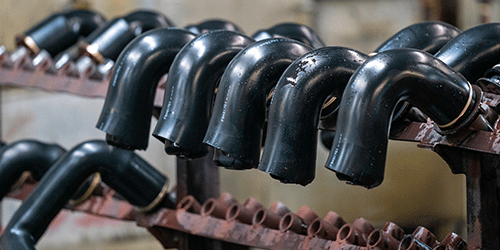Compression Molding
Posted By:
Sperry & Rice
Monday March 19, 2018
The process used to mold materials such as preheated polymers, by placing them into a heated, open mold cavity is known as compression molding. This process allows production of parts that are of different complexities, thicknesses and lengths.
Products formed by this method are strong, thus attracting use in a variety of different industries. The most common sort of material to undergo compression molding is thermoset composites.
The Compression Molding Process
The compression molding process consists of these six steps.
- A two part, high strength, metallic tool exactly matching the dimensions of the required part is created.
- The fabricated tool is then installed into the press and heated.
- Then the composite is pre-formed into the same shape as the tool. This step is critical as it helps in improving the way the finished part performs.
- This pre-formed part is then placed inside the heated mold.
- The tool is compressed under high pressure, typically between 800 to 2000psi. Pressure depends on the type of material and thickness of the part.
- The pressure is released, and the part has to be removed from the tool along with any flash of the remaining resin.
Advantages
- The compression molding cycle time is only a few minutes
- High production rate
- Surface finish is great and different textures and styling can be implemented
- Part uniformity is higher using compression molding
- Plenty of flexibility achievable in design of parts
- Attachments, bosses, inserts and similar extra features can be added during the molding process
- Minimum raw material is wasted
- Low maintenance cost
- Molded component has negligible or no residual stresses
- High dimensional accuracy due to reduced shrinkage and twisting
- Suitable for mass production or large volume production
Disadvantages
- Requires high initial capital investment as compression molding parts and machinery is expensive
- Not economical if purpose is to create prototypes or generate a select number of products
- Extremely labor intensive process
- Requires energy to create extremely high pressure
- Secondary processes, such as machining and trimming, are sometimes required after compression molding
- Unseen parting lines exist in some cases
- Mold depth is limited, so the grooves cannot be too deep
Applications of Compression Molding
The compression molding method can be applied to both composites, based on thermoplastic and thermosetting materials.
This process has a wide array of application which ranges from avionic or aeronautic components, to electrical items, kitchen goods, toys and automobile parts.
Some characteristic products include battery trays, automobile panels, life gates, roofs, fenders, bumpers, hoods, spoilers, air deflectors, kitchen trays and bowls, furniture, dinnerware, plastic storage containers, buttons, medical (ultrasound) equipment and recreational body parts for vehicles.
|
